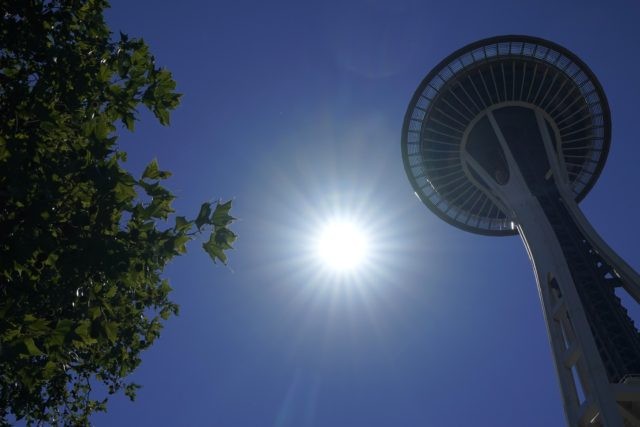As the Pacific Northwest swelters in an unprecedented heat wave, an electrical utility in the Washington state city of Spokane has announced that there will be more rolling blackouts that will cut off electricity and air conditioning
Rolling blackouts in parts of US Northwest amid heat waveBy NICHOLAS K. GERANIOSAssociated PressThe Associated PressSPOKANE, Wash.
SPOKANE, Wash. (AP) — The unprecedented Northwest U.S. heat wave that slammed Seattle and Portland, Oregon, moved inland Tuesday — prompting a electrical utility in Spokane, Washington, to warn that people will face more rolling blackouts amid heavy power demand.
The intense weather that gave Seattle and Portland consecutive days of record high temperatures exceeding 100 degrees Fahrenheit (37.7 degrees Celcius) was expected to ease in those cities. But inland Spokane was likely to surpass Monday’s high temperature — a record-tying 105 F (40.6 Celsius).
About 8,200 utility customers in parts of Spokane lost power on Monday and Avista Utilities warned that there will be more rolling blackouts on Tuesday afternoon in the city of about 220,000 people, with the high temperature predicted at 110 F (43.3C), which would be an all-time record.
Avista had to implement deliberate blackouts on Monday because “the electric system experienced a new peak demand, and the strain of the high temperatures impacted the system in a way that required us to proactively turn off power for some customers,” said company president and chief executive Dennis Vermillion. “This happened faster than anticipated.”
Customers on Tuesday should expect more “targeted protective outages” Tuesday, he said.
A high of 117 degrees F (47 C) was predicted in the southeastern Washington cities of Richland, Kennewick and Pasco. The state’s highest-ever recorded temperature was 118 degrees F (47.7 C), recorded in 1961.
The United Farm Workers urged Washington Gov. Jay Inslee to immediately issue emergency heat standards protecting all farm and other outdoor workers in the state with a strong agricultural sector. The state’s current heat standards fall short of safeguards the UFW first won in California in 2005 that have prevented deaths and illnesses from heat stroke, the union said in a statement.
Unlike workers in California, Washington state farm workers do not have the right to work shade and breaks amid extreme temperatures.
“I was off today so I was helping distribute water and information to the cherry harvesters,” said Martha Acevedo, a wine grape worker from Sunnyside, Washington, said in a union statement. “They were struggling. No shade, not even cold water.”
Garbage collectors in Walla Walla started their shifts at 3 a.m. instead of the usual 7 a.m. in an effort to beat the heat.
Seattle was cooler Tueday with temperatures expected to reach about 90 F (32.2 C) after registering 108 degrees F (42 Celsius) on Monday — well above Sunday’s all-time high of 104 F (40 C). Portland, Oregon, reached 116 F (46.6 C) after hitting records of 108 F (42 C) on Saturday and 112 F (44 C) on Sunday.
President Joe Biden, during an infrastructure speech in Wisconsin, took note of the Northwest as he spoke about the need to be prepared for extreme weather.
“Anybody ever believe you’d turn on the news and see it’s 116 degrees in Portland Oregon? 116 degrees,” the president said, working in a dig at those who cast doubt on the reality of climate change. “But don’t worry — there is no global warming because it’s just a figment of our imaginations.”
The heat wave was caused by what meteorologists described as a dome of high pressure over the Northwest and worsened by human-caused climate change, which is making such extreme weather events more likely and more intense.
The temperatures have been unheard of in a region better known for rain, and where June has historically been referred to as “Juneuary” for its cool drizzle. Seattle’s average high temperature in June is around 70 F (21.1 C), and fewer than half of the city’s residents have air conditioning, according to U.S. Census data.

COMMENTS
Please let us know if you're having issues with commenting.